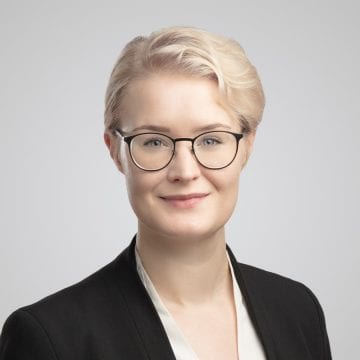Circular Economy: A policy block?

Leea Ojala,
Director of Consultancy,
Logscale Ltd.,
Consulting companies towards compliant and well-managed supply chains,
Finland
Circular economy has quickly become one of the biggest global megatrends of the day. It is said to have a critical role in mitigating climate change and in halting biodiversity loss. For the Baltic Sea alone, circular economy could provide valuable means to tackle eutrophication, through the recycling and reusing of nutrients arising from agriculture.
The ultimate idea in a circular economy is a closed loop: the value of products and materials is maintained for as long as possible. Waste and resource use are minimized, and products are used again at the end of their life to create further value.
Not surprisingly, circular economy has found its way to the core of EU policy. The European Commission adopted an action plan to help accelerate Europe’s transition towards a circular economy already in 2015, with the title “Closing the loop – An EU action plan for the Circular Economy”. Among other things, legislation resulting from the action plan aims at increasing recycling rates, reducing the amount of landfilled waste and tackling plastic marine litter.
There are, of course, many approaches towards a circular economy. An important aspect is extending the life cycles of products sold, e.g. through repair and maintenance. The usage rates of existing products can be increased through different sharing platforms. By offering a product as a service, there is a strong incentive to amp up resource productivity, by addressing inefficiencies across the whole value chain. A reform in the use of resources might also be realized by switching from unsustainable materials to renewable, bio-based or completely recyclable materials. The so-called ecodesign approach aims at minimizing waste in the first place.
To fully close the loop, however, the end-of-life value of materials needs to be recovered. This means tackling the issue of waste, which is one of the biggest concerns in the current linear economy. Yet, recovering value in waste, either as resource or as energy, is not always easy in terms of the current legislation.
For obvious environmental and health reasons, waste is heavily regulated. Following a precautionary principle, the definition of waste has also been applied very broadly. In accordance with the European Waste Framework Directive, waste means any substance or object which its holder discards, intends to discard, or is required to discard. While a broad definition and heavy regulation might serve as an effective control mechanism, they may unnecessarily hinder the utilization of many materials.
Therefore, to enable efficient recovery of useful resources or energy from waste, it is key that the end products of recovery processes are no longer considered as waste. In essence, it should not be easier to use virgin materials over recovered materials when the environmental impacts and performance according to applicable quality standards are at par.
For many materials, mechanisms to remove their waste status do exist. At EU level, there are clear criteria for Competent Authorities to consider waste either as a by-product or as no longer waste. In the latter case, a so-called End-of-Waste status can be granted. Sadly, the procedures for these are still in their infancy. Only a handful of waste materials are dealt with at EU level. While the EU encourages towards national procedures and case-by-case decisions, Competent Authorities often lack the consistency and courage to grant such statuses.
A big part of the problem is that the current legislative system has been designed for a linear economy. Recovery operators have to work at the interface of current chemical, product, waste and environmental legislation, while Competent Authorities still largely work within their specified linear silos.
Where cross-disciplinary expertise and collaboration between the relevant agencies and authorities is lacking, circularly oriented businesses find themselves moving much faster than the legislative processes. This might mean that their visionary concepts never make it through the authority procedures.
Luckily, the EU has awakened to the fact that much more is needed. Stakeholders have been consulted on the difficulties of the interface between chemical, product and waste legislation. Furthermore, efforts are made to clarify and push forward the End-of-Waste procedures.
More importantly, the EU now aims at an even more ambitious ‘circular economy 2.0’ package. Finland has had a major role in pushing this package forward during its Presidency of the Council of the EU. The question remains, however, whether the legislative process is agile enough to enable a timely transition to a circular economy.
In any case, one thing is certain: a lot of effort is needed to bend the originally linear system into a circular one.
Expert article 2624
